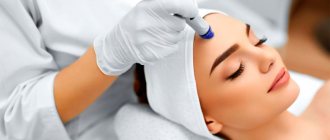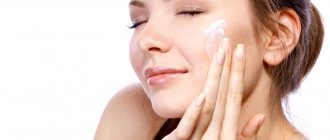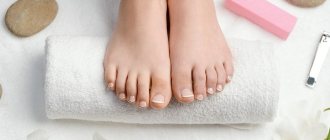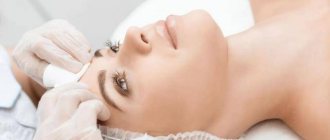Today we are looking at chemical facial peeling, as well as the features of this procedure. After all, beauty salons, especially in the autumn-winter period, very actively promote this procedure. Yes, she is successful. Yes, the results are visible. But everything can’t be so perfect when chemical compounds are used for manipulation. We must understand that not all of them are absolutely harmless, natural and do not cause side effects.
Unfortunately, a cosmetologist in a salon is unlikely to tell you about all the pitfalls. To be fair, let’s say that with a reasonable approach and taking into account all possible nuances, complications arise extremely rarely.
So, dear ladies, let’s begin to consider all the pros and cons of chemical facial peeling.
Pros and cons of chemical peeling by type of procedure
First of all, let’s remember what chemical peeling is in principle. This is a procedure for cleansing the epidermis using chemical compounds that provoke controlled damage to the skin, resulting in an inflammatory reaction. In other words, a targeted burn of dermal tissue. The purpose of this effect is to remove dead layers.
If you delve into physiology (school curriculum), any damage causes a response from the body aimed at recovery. Regeneration processes are launched, protein compounds are more actively produced, and metabolic reactions occur faster. And all in order to “bring back to normal” the damaged area.
Impressive, isn't it?! Now let's look at chemical peeling for the face: the pros and cons of manipulation. And to be precise, it is incorrect to talk about such a procedure in a single number. There are types of peeling that have different effects on the epidermis. These are superficial, medium and deep cleansing. Consequently, the effectiveness and harm of such procedures also varies somewhat.
Among the problems that chemical peeling can solve, cosmetologists name the following:
- Problem skin. Moreover, both oily and prone to dryness and flaking;
- Thickening of the epidermis, tuberosity - hyperkeratosis;
- Pimples, blackheads, acne and post-acne, comedones (blackheads), millennials (milliums);
- Loss of elasticity, appearance of wrinkles, sagging skin;
- Signs of photo and chronoaging;
- Hyperpigmentation, including age-related, freckles;
- The presence of scars, cicatrices;
- Uneven tone, dull complexion.
All these problematic issues can arise at any age. Ideally, our body should independently and in a timely manner get rid of keratinized cells of epithelial tissues. However, due to objective and subjective reasons, these processes are disrupted. And chemical peeling is used as an “auxiliary”, accelerating and stimulating.
However, there are contraindications for any type of procedure, regardless of the depth of impact on the epidermis. These include:
- Wounds, scratches, cracks, purulent pimples - in a word, damage to the integrity of the skin at the site of application of the working composition;
- Excessively sensitive skin;
- A history of allergies;
- Inflammatory processes on the face;
- Dermatological diseases;
- Infectious and other diseases accompanied by increased body temperature;
- The period of exacerbation of chronic diseases of any location and origin;
- Oncology of any location and stage of progression;
- Postoperative period;
- Endocrine pathologies;
- Tendency to form keloids and scars;
- Individual intolerance to any of the components of the peeling preparation;
- Use of certain medications.
Now it would be advisable to consider each type of peeling in the context of its pros and cons.
Surface
Superficial peeling is the simplest, most gentle procedure. The impact is made at the level of the stratum corneum of the epidermis. This manipulation can be carried out by a cosmetologist in a salon. Or you can do it yourself, using store-bought or home-prepared formulations.
Among the pronounced advantages of such manipulation we note:
- Safety (relative!);
- Painless;
- Minimum side effects and complications;
- Short recovery period.
Well, the “fly in the ointment” is the cons:
- Effective only for minor defects and age-related changes in the skin;
- A noticeable result after completing a course of procedures (from 5 to 10 sessions).
Important! Despite the fact that superficial peeling is considered a safe method for cleansing the skin, all precautions must be taken, contraindications must be taken into account, and post-care rules must be followed.
Cosmetologists state that many women seek help to eliminate complications precisely after superficial peelings performed at home. Clients do not take into account their individual characteristics, exceed the exposure time of the working composition, and use inadequate chemicals.
Median
Medium chemical peeling provides for deeper penetration of the components of the product. All layers of the epidermis and the upper layer of dermal tissue are affected (and these are, for a minute, living cells). The applied composition helps exfoliate dead cells, eliminate deeper problems, and has a lifting effect.
Pros of the procedure:
- Efficiency in the presence of inflammatory processes;
- Elimination of pimples, blackheads, acne and other encrusted defects;
- Combating moderate age-related changes;
- Minimizing wrinkles, removing scars, age spots;
- Rejuvenating effect due to stimulation of the production of neocollagen and other protein compounds;
- Increased turgor, improved skin elasticity;
- Alignment of color, tone, microrelief of the face.
The disadvantages include:
- Unavoidable side effects;
- Possibility of complications;
- Soreness;
- Long recovery period;
- The need for a course of procedures (from 4 to 6 sessions) at weekly intervals.
Some extreme ladies manipulate salon preparations on their own. Please note - this is very dangerous, especially if you are doing this for the first time. The specialist sees the skin reaction and can neutralize the composition in time, preventing severe burns. It is very difficult to control such a process yourself.
Deep
Deep peeling must be used depending on strict indications. The procedure is equated to plastic surgery; the manipulation is no longer carried out by cosmetologists, but by surgeons. Tissue removal occurs, involving the deep layers of the dermis in the process.
Pros:
- Effective elimination of even pronounced signs of skin aging;
- Correction of pronounced defects of the epidermis - strong pigmentation, some dermatological problems, deep scars and scars.
Due to the complex intervention and the depth of impact, there are quite a few disadvantages:
- The need for general anesthesia;
- Severe pain after the procedure;
- High risk of complications;
- The inevitability of a number of pronounced side effects;
- A long recovery period, requiring specific care with the use of medications and special cosmetics;
- The need for UV protection for at least three months after complete recovery.
Such deep cleansing of the skin is carried out only under general anesthesia, in a hospital setting. During the recovery period, bed rest is indicated for a week (also in the clinic, not at home). Only after this is outpatient care and rehabilitation possible under the strict supervision of a doctor.
Possibility of peelings of different depths
The effectiveness of peelings and the benefits of the procedures directly depend on the depth of penetration of the peeling “agent” into the skin. These can be acid or enzyme compositions for exfoliation, scrubs or hardware rejuvenation. The deeper the peeling agent affects the layers of the skin, the more problems can be solved simultaneously with the help of such exfoliation.
Despite the fact that many women trust exfoliation and highly value facial peeling, only experienced beauty salon clients know what this procedure actually does and how harmful it can be for the skin. The debate about the irreplaceability of peelings and the fact that professional cleaning can cause discomfort, as well as even more aesthetic problems, is still relevant. They are based on the dual nature of exfoliation. After all, on the one hand, peelings actually erase defects and signs of age from the face, and on the other hand, they injure the skin, making it thinner and drier.
What will cosmetologists say?
Cosmetologists who perform chemical peeling largely balance the pros and cons of the procedure. However, experts note that everything is good in moderation. In other words, procedures should not be abused under any circumstances.
Recommended:
- Peels should be carried out during the period of least solar activity (autumn-winter);
- Consider indications for procedures and all possible contraindications;
- Superficial cleansing – course. Perhaps several times a year;
- Medium – also in a course, once a year;
- Deep - according to strict indications, once every few years.
Use only adequate products for procedures; if possible, contact specialists even for superficial peeling. If you want to do the procedures yourself, be sure to consult with a cosmetologist to find out all the nuances.
Remember! Chemical peeling of any depth of exposure is an injury to the epidermis. He is recovering, no doubt. But alas, the body’s reserves are not limitless. Frequently performing such procedures exhausts resources. There may come a time when recovery is simply impossible for the simple reason that your body has used up its genetically endowed regenerative reserve.
Recipes for peeling mixtures at home
With calcium chloride
For the simplest procedure, just buy calcium chloride (5 or 10% solution), prepare a sponge and baby soap. Apply the solution to a face cleansed of makeup using a sponge, then lather the same cotton swab with baby soap and work the face in a circular motion, following the massage lines. Literally you will immediately discover that particles of the stratum corneum of the skin remain on the soapy tampon. Then you need to rinse off the soap and apply a cream with a moisturizing effect. This procedure should be done no more than once every 10 days.
With salicylic acid
A very simple and affordable peeling recipe is based on the use of a regular acetylsalicylic acid tablet, which is in every medicine cabinet. You need to drop a small amount of water on it, and when the tablet begins to granulate, add a little honey to it, about ½ teaspoon. Mix and massage the mixture onto the skin, leave for a few minutes, and then rinse with warm water.
And another simple recipe
Prepare a mixture of 30 g of camphor alcohol, the same amount of glycerin, 10 g of boric acid, 2 tablets of hydroperite. Add a little baby soap into the mixture and stir until it becomes a foamy cream. This mixture should be applied to the skin, and after drying, rinse off first with calcium chloride (10% solution), and then with warm water.
This simple chemical peeling at home improves the condition of the skin: the pores are cleansed of dirt and oil;
small scars and acne marks are smoothed out; the skin takes on a well-groomed and healthy appearance; the number of wrinkles decreases.
Of course, home peeling is somewhat weaker than those performed by cosmetologists, but it also gives an excellent effect.
Summarize
Modern cosmetology offers a lot of different procedures designed to solve appearance problems. Chemical peeling takes its place of honor on this list. This is an effective manipulation that helps women correct congenital and acquired defects.
There are pros and cons. But if you know about all the pitfalls, adhere to the principle of the “golden ratio”, listen to the opinions of experts and do not engage in unjustified amateur activities - go ahead! After all, in the struggle for beauty and youth, all means are good. The main thing is not to regret your excessive passion for self-improvement.
Contraindications
Before starting the procedure and choosing a peeling recipe, you need to know about some contraindications, namely: the presence of serious inflammation and open wounds on the skin; neoplasms; herpes in the active phase; cardiovascular diseases; mental disorders. In addition, peeling with acid is not recommended in the summer, with active sun, because it can provoke the appearance of pigment spots.
What else do you need to remember?
1. Before the procedure, an allergy test for the drug that will be used is required.
2. The selected preparation is always applied in a thin layer to avoid burns. 3. Do not apply the mixture to the skin around the eyes. 4. Chemical peeling is recommended no more than 3 times a month. Posted in
Skin cells tend to die and accumulate on the surface of the epidermis, causing uneven relief. If you notice that the foundation applies unevenly, emphasizes flaking, and gets stuck in small wrinkles, this does not mean that you have forgotten how to do makeup - it’s just time to sign up for peeling.
Facial peeling improves skin quality © Getty Image
It promotes natural exfoliation of dead particles and stimulates cellular renewal. As a result, the skin becomes smooth, radiant and fresh.
Peeling also has other beneficial effects. This procedure:
- prepares the skin for subsequent care and helps cosmetic components to be better absorbed;
stimulates collagen production;
improves blood circulation;
reduces superficial wrinkles;
fights pigmentation;
cleanses pores.
What are the benefits of peeling?
Peeling evens out skin tone and texture. © Getty Images
Any peeling is stressful for the skin. But stress gives an impetus to restoration and renewal. The advantages of peeling are difficult to overestimate. With this procedure you can significantly improve the quality and appearance of your skin. Peeling has a complex effect and works in different directions.
- Cleansing.
When a layer of dead particles is removed from the surface of the epidermis, the pores are cleaned and become less noticeable.
Rejuvenation.
Skin texture and tone are evened out. In addition, after peeling, the skin thickens and regains its lost tone.
Getting rid of defects.
By exfoliating excess, acids fight signs of aging and pigmentation.











